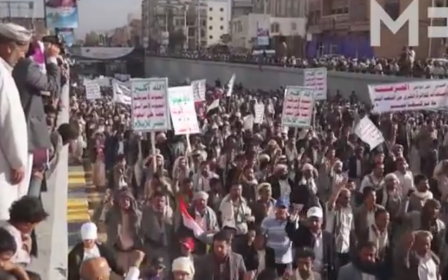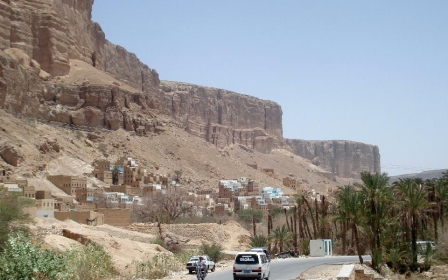Yemen’s Arab winter

Three and half years since popular uprisings swept the Middle East, bringing hundreds of thousands to the streets in protest, nearly as many again have now perished in civil war and sectarian strife, and millions of Arabs are on the move. From Tripoli to Cairo, governments are in crisis. Lacking popular support, they are unable to manage the corrupt and divided states they inherited. Coups are commonplace. Countries are being dismembered. As borders disappear, all pre-existing politics slide into irrelevancy.
Yemen, the poorest and youngest Arab Spring nation, appears to have fared better than some of its neighbours. In 2012, after mass protests and with the country nearing civil war, Ali Abdullah Saleh, who had ruled Yemen for 33 years, agreed to stand down, handing power to his deputy, Abd-Rabbu Mansour Hadi, in exchange for immunity. Hadi, along with Saleh’s ruling party and a coalition of Islamists, set about “resolving the revolution through politics.” A national dialogue conference was held and a new constitution paved the way for elections and federalism. In the west, Yemen was chalked up as a success story. A “triumph of diplomacy,” it had escaped Syria’s awful fate. But in recent weeks cracks have appeared in the façade, revealing a nation divided. All the timetables, revised budgets and talk of progress in Sana’a mask a troublesome reality: the uprising has done grievous damage to the country’s already fragile social fabric. Today, rather than walking the path to democracy, Yemen looks like a country on the verge of collapse.
A parade of power
On 17 August the Houthis, a Shia rebel group based in the northern region of Saada, issued an ultimatum to the government. The group’s leader said that President Hadi had five days to cut fuel prices and dissolve the government - or face a rerun of the 2011 revolution that toppled Saleh. Thousands of Houthi supporters, mainly men in their 20s and 30s, descended on the capital following the announcement. Fanning out across the city they pitched tents, rallied on rooftops and outside ministries, and set up checkpoints along the main airport road. The US embassy advised foreign nationals to remain indoors. Meanwhile, tanks and armoured vehicles were deployed to secure government buildings. Last week, President Hadi said that he would meet the group’s demands if they agreed to end “the siege.” The army, he added, was on “high alert” and “ready to address any threat.” No agreement has yet been reached. Since then the Houthis have dug in and the government’s stance has hardened.
For nearly a decade before the Arab uprisings, the Houthis were the underdogs in an on-off civil war with the Yemeni government who accused the group of seeking to establish a Zaydi theocracy. (Zaydism is a branch of Shia Islam unique to north Yemen, distinct from that practised in Iran.) The 2011 uprising, however, shifted the dynamics of the conflict. With the government’s firepower focused on dissenters in the major cities, Saada quietly slid out of its control. A mini state sprang up, run almost entirely by the Houthis, who took on the responsibilities of government, appointing their own governor, policing the streets, and rebuilding schools and houses destroyed in the war.
With Saleh’s resignation in 2012, the Houthis came in from the cold, sending delegates to take part in the national dialogue conference, they seemed to be making a transition into mainstream politics. But the group retained heavy weapons. Battling radical Sunni Islamist and tribal militias, the Houthis advanced on the capital. In July this year they seized the city of Amran, 30 miles north of Sana’a.
For years the government has named the Houthis extremists; a band of zealots financed, it claims, by an Iranian regime seeking to extend its influence across the Middle East. The Houthis’ recent behaviour, though, suggests a group that is far more politically astute and ambitious. Their fight in the capital is framed in strictly national terms, articulating popular grievances such as rising fuel prices, an end to corruption, and support for the poor, in a vocabulary redolent of the early days of the Arab spring. Last week, as the Houthis marched through Sana’a, they swapped their usual rallying call: “Death to America, death to Israel, curses on the Jews, victory to Islam” (which resonates with Yemenis in the countryside, beleaguered by US drone strikes) for “the people want the regime to fall” - the famous chant heard across the Middle East. All of which suggests an ambition that goes beyond tribal politics and a desire to recapture the spirit of the 2011 uprising.
The spirit of 2011
“This is not about fuel subsidies. They [the Houthis] are seeking much more than that,” Ahmed Ali Ahmed, a linguistics expert and the author of a book on the Houthis, told MEE. “They are parading their power. They want to attract more supporters; to guarantee their presence in the capital.”
However, Ali Emad, a Houthi spokesman, insists the group has no interest in seizing the capital and denies being supported by Tehran.
“Our objective is to build a democratic civil state that guarantees the rights of everyone and is governed by the law,” said Emad. “When we end foreign interference in our affairs, companies controlling our oil, when we know more about the dangers of America, then I think we will be able to move forward as a country.”
The Houthi’s advance has put Yemen’s Islamist party, Islah, in a bind. Though the Islah took part in the movement to oust Saleh and has key posts in the country’s transitional government, the party remains on edge. The fall of the Muslim Brotherhood in Egypt last summer, along with recent Houthi incursions into former Islah strongholds such as Amran, have left officials fearing for the party’s future.
“The GPC [ruling party] fought the Houthis tooth and nail for years. Now the Houthis are rampaging in the capital and the GPC turns a blind eye,” said an Islah party official who did not wish to be named. “Why? Because we, [the Islah] are the common enemy. This is the new Arab winter. It is dark and shadowy. It’s all about power politics and finding allies these days. It is a dangerous time for all Yemenis.”
Middle East Eye propose une couverture et une analyse indépendantes et incomparables du Moyen-Orient, de l’Afrique du Nord et d’autres régions du monde. Pour en savoir plus sur la reprise de ce contenu et les frais qui s’appliquent, veuillez remplir ce formulaire [en anglais]. Pour en savoir plus sur MEE, cliquez ici [en anglais].




